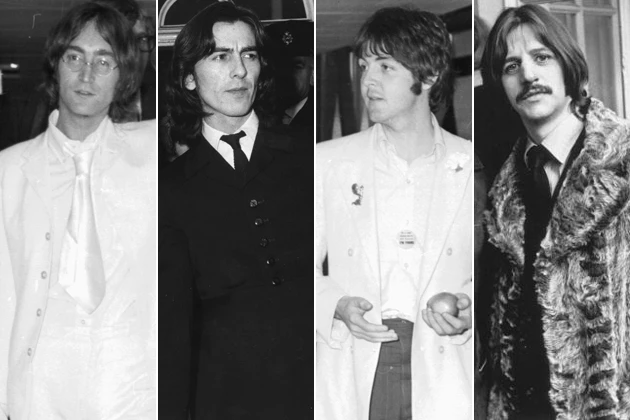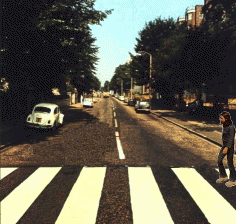Four Not-So-Fab ‘I Quit’ Stories – How George, Ringo, John and Paul Each Left the Beatles
by Dave Lifton
September 20, 2014
To the outside world, the Beatles were the ultimate unified force. But behind the scenes, each of them at one point quit the famous band — even if it was only temporarily.
The Fab Four’s camaraderie was suggested in their early days by their matching outfits and haircuts (and it didn’t hurt that Paul McCartney, John Lennon and George Harrison were all the same height), and reinforced by their sense of humor. That’s one of the reasons their breakup in April 1970 came as such a shock — there was never any indication to the outside world that their relationship was anything but as harmonious as their music.
As engineer Peter Vince said of the recording of 1968′s ‘The Beatles‘ — more commonly known as the “White Album” — in ‘The Beatles Recording Sessions: The Official Abbey Road Studio Session Notes, 1962 – 1970,’ “Things were getting very strained on Beatles sessions by this time. The engineers would be asked to leave. They’d say ‘Go off for a meal’ or ‘Go off for a drink,’ and you’d know they were having heavy discussions and didn’t want anyone around.”
To each member, the pressure of being a Beatle — which by mid-1968 also involved running the group’s Apple Corps company — eventually became too much, with one of them telling the others that they were leaving, only to eventually be coaxed back. We’ve collected all of those times and listed them chronologically below.

Hulton Archive (4)
Ringo Starr
Aug. 22, 1968
The scene in 'A Hard Day's Night' where Ringo Starr left the group proved to be somewhat prophetic, as he was the first Beatle to quit. "I felt I wasn’t playing great, and I also felt that the other three were really happy and I was an outsider," he recalled in 'Anthology.' As it turned out, the other three were feeling exactly the same way about their position in the band.
Still, Starr felt he needed a break and went to Sardinia on a yacht owned by actor Peter Sellers. During that time, he wrote 'Octopus's Garden,' while McCartney took his spot on the drum stool for 'Back in the U.S.S.R.' and 'Dear Prudence.' Eventually his bandmates sent Ringo a telegram saying how much they loved and needed him and, two weeks later, he returned to find his drum kit decorated in flowers that spelled out, "Welcome Back, Ringo."
George Harrison
Jan. 10, 1969
There's a scene in the documentary 'Let It Be' where George, fed up with Paul's bossiness, says to him, "I’ll play what you want me to play. Or I won’t play at all if you don’t want me to. Whatever it is that’ll please you, I’ll do it." It didn't help that Harrison was frustrated at the difficulties in getting his own songs recorded.
He also wasn't too happy with the idea of all of this taking place as the film cameras rolled. “It never came to blows," he said. "But I thought, ‘What’s the point of this? I’m quite capable of being relatively happy on my own and I’m not able to be happy in this situation. I’m getting out of here.’" A few days later, Harrison walked out during lunch, telling them, “See you ’round the clubs.”
Harrison's absence didn't last long. He returned to the group five days later following a five-hour meeting, but only after the other three agreed to a few of his demands, namely that they leave Twickenham Film Studios -- where they were filming -- for the comfort of Apple Studios in Savile Row, and that they give up the idea of returning to performing in front of an audience
John Lennon
Sept. 20, 1969
The idea had been milling about in his head for some time, but his performance at the Toronto Rock and Roll Revival gave Lennon the courage to tell the others of his decision to quit at a meeting a week later. As recounted in 'Anthology,' McCartney was still holding on to the ideals of the 'Get Back' / 'Let It Be' concept, that the band should return to their roots playing live rock n' roll in small clubs and they would remember why they were together. But "Lennon looked at me in the eye and said, 'Well, I think you're daft. I wasn't going to tell you till we signed the Capitol deal...but I'm leaving the group!"
On the advice of manager Allen Klein, they kept the news from the public. It made sense, given that they were just about to release 'Abbey Road' and still had the mess that was 'Let It Be' to sort through. Plus, there was always the possibility that the ever-impulsive Lennon could change his mind. "For about three or four months, George, Ringo and I rang each other to ask, 'Well, is this it, then?" McCartney continued. "Nobody quite knew if it was just one of John's little flings, and that maybe he was going to feel the pinch in a week's time and say, 'I was only kidding.'"
As they figured out how to proceed, they started to work on individual projects. George began spending time with Delaney and Bonnie, which by then included his friends Eric Clapton and Billy Preston; Ringo recorded 'Sentimental Journey;' John, with George in tow, recorded 'Instant Karma.' Meanwhile, Paul retreated to his farm in Scotland and eventually started to make his solo debut.
Paul McCartney
April 10, 1970
The breakup of the Beatles was announced not by a major press conference, but in the promotional material that accompanied the news of the April 17 release of McCartney's self-titled album. Not wanting to talk to the media, Paul and Apple press officer Derek Taylor created a Q&A sheet that, in a few sentences, told the world about the split. Although he wouldn't say if it was permanent, to the question, "Do you foresee a time when Lennon-McCartney becomes an active songwriting partnership again?” his answer was, simply, “No.”
The news blindsided the others, who were already unhappy with the idea of 'McCartney' competing with 'Let It Be,' which was coming out a week later. But Paul had his reasons. "I felt the group finished the minute John said, 'I'm leaving,'" he said. "We'd all (except John) had goes at trying to to keep the group together and failed. So it wasn't any longer a case of trying to keep it together, it was now whether we tell the world or not, and I thought, 'Well, if we are going to go our own separate ways it'll only work against us if they all still think we're in the Beatles.' So I said, 'There's been a clean break. Let's just admit it. Let's just tell the world now. Isn't it time?'"
Seven months later, on New Year's Eve, McCartney filed a lawsuit against the other three and Apple Corps to officially dissolve the Beatles. The suit took four acrimonious years to work its way through the courts, with the group legally breaking up in January 1975.


No hay comentarios:
Publicar un comentario